101 Ways How to Improve Clinic Efficiency in Your Medical Practice (Boost Profits & Reduce Stress!)
Looking for ways how to improve clinic efficiency in your medical practice? Every wasted minute means lost revenue, staff burnout, and frustrated patients. I’ve researched the best strategies to streamline workflows, reduce wait times, optimize billing, and boost productivity—without adding more stress. Small changes lead to big results.
Key Takeaways
- Streamline patient scheduling with automated reminders and digital check-ins to reduce no-shows.
- Improve billing efficiency by tracking claim denials, submitting clean claims, and following up quickly.
- Leverage EMR technology to minimize paperwork and speed up documentation.
- Train and cross-train staff to improve workflow flexibility and prevent bottlenecks.
- Enhance patient engagement through online portals, social media, and proactive communication.
- Monitor financial performance by tracking revenue per visit, reimbursement times, and patient retention rates.
- Strengthen cybersecurity with HIPAA-compliant protocols, encrypted data, and multi-factor authentication.
- Invest in leadership development to build a culture of continuous improvement and accountability.
Let’s dive into 101 practical ways to make your practice run smoother, smarter, and more profitably.
Appointment Scheduling & Patient Flow
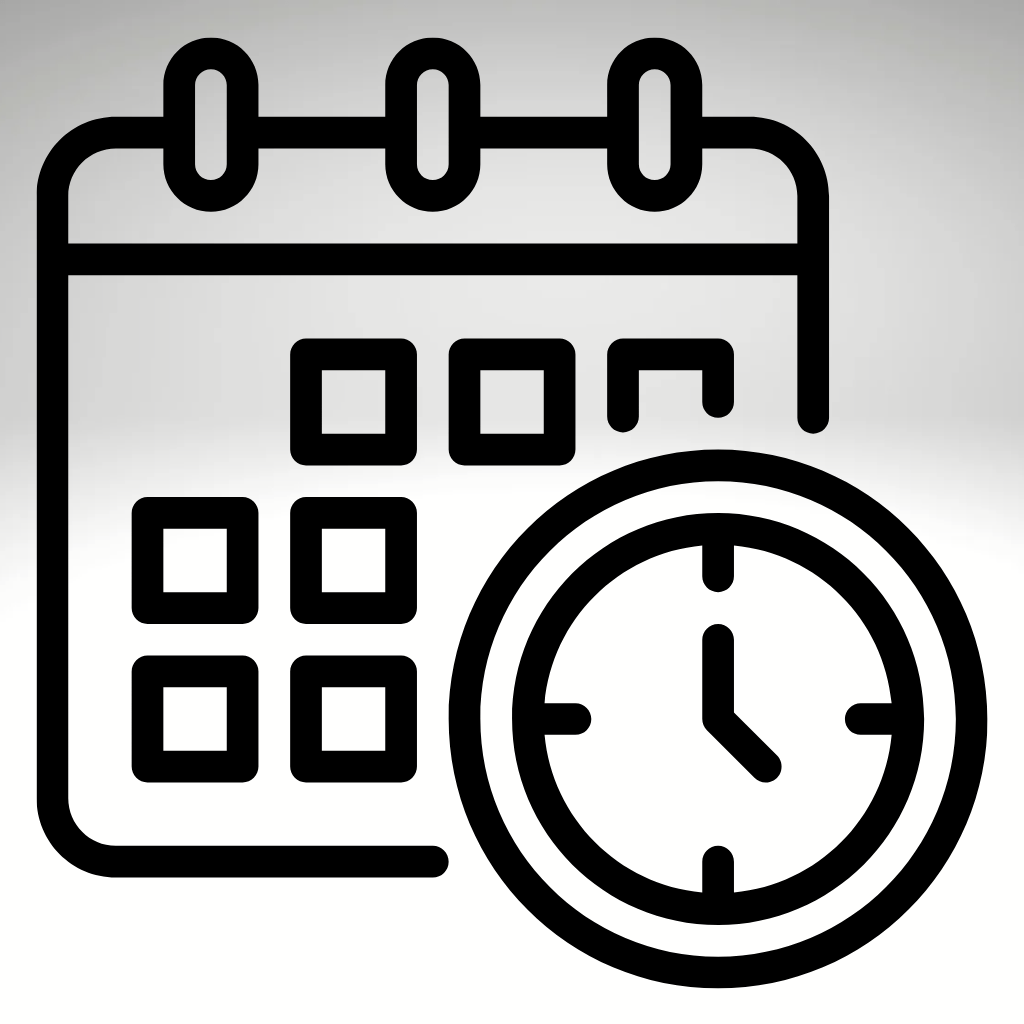
Let’s start with one of the biggest time-wasters in any medical practice—inefficient scheduling.
Think about it: Every minute a patient spends waiting is a minute your schedule is falling behind. Long wait times lead to frustrated patients, stressed-out staff, and a ripple effect that throws off the entire day. The good news? A few simple tweaks can make a huge difference.
Here’s how you can take control of your scheduling and patient flow to keep things running smoothly:
1. Offer Online Scheduling (Patients Will Love You for It)
We’re living in the age of Amazon and DoorDash—patients expect convenience. Giving them the ability to book, reschedule, or cancel their own appointments online saves your front desk staff a ton of time and makes life easier for patients.
Pro tip: Choose an online scheduling tool that integrates with your EMR so appointments sync automatically.
2. Use Automated Appointment Reminders (Goodbye, No-Shows!)
Missed appointments are a huge waste of time and revenue. Instead of manually calling every patient, use text, email, or automated calls to remind them.
Even better? Set up reminders 48 hours before the visit so patients have enough time to cancel or reschedule if needed.
3. Implement Telehealth for Quick Follow-Ups
Not every patient needs to be seen in person. Follow-ups, medication refills, and routine check-ins can often be done over video or phone calls.
This frees up valuable in-office slots for patients who actually need face-to-face care while boosting efficiency for both staff and providers.
4. Build Buffer Time Into Your Schedule
Ever had a patient visit run way longer than expected? Of course, you have. It happens all the time.
One simple fix: Leave small buffer slots (5-10 minutes) throughout the day.
- This helps absorb unexpected delays.
- You’ll avoid a snowball effect where one late appointment throws off the entire schedule.
It’s a lifesaver when dealing with complex cases, new patients, or just that one person who always brings up “one more thing” at the end of the visit.
5. Use a Waitlist to Fill Cancellations
Last-minute cancellations? Instead of letting those time slots go to waste, have a waitlist ready to fill them.
Patients who want to get in sooner love being on standby. And your schedule stays full without scrambling at the last minute.
Bonus tip: Some scheduling systems allow patients to join a waitlist automatically, sending a text if a spot opens up.
6. Let Patients Check In Digitally
Ever seen a front desk drowning in paperwork? Not a good look.
Adding self-check-in kiosks or mobile check-in (via a patient portal) lets patients:
- Confirm their details
- Sign consent forms
- Update their insurance info
This means less paperwork for your staff and a faster intake process for patients.
7. Assign a Triage Nurse to Prioritize Patients
Some patients need to be seen ASAP. Others? Not so much.
Having a triage nurse evaluate symptoms before scheduling can:
- Prioritize urgent cases without overloading the doctor.
- Prevent unnecessary ER visits for non-emergencies.
- Make sure the right provider sees the right patient.
Win-win: Doctors stay on schedule, and patients get care when they actually need it.
8. Track No-Shows and Fix the Root Cause
If no-shows are a problem, dig into the why.
- Are patients forgetting their appointments? → Send better reminders.
- Are your time slots inconvenient? → Offer flexible hours.
- Are patients frustrated with long waits? → Optimize scheduling efficiency.
Pro tip: Run a no-show report in your EMR to spot patterns. If certain times/days have higher no-show rates, tweak your schedule to minimize the impact.
9. Pre-Fill Patient Charts Before the Visit
One major time suck? Doctors spending the first five minutes of an appointment flipping through patient records.
Instead, have your staff pre-load key patient info into the EMR before the visit.
- Past diagnoses
- Medication list
- Chief complaint & vitals
This allows providers to jump straight into the visit, cutting down on wasted time.
10. Group Similar Appointments Together
Ever noticed how switching gears between different types of visits slows things down?
Try scheduling similar appointments in blocks:
- Morning → Annual physicals & wellness visits
- Afternoon → Chronic disease management (diabetes, hypertension, etc.)
- End of day → Sick visits & urgent concerns
This minimizes mental switching for providers and makes workflows more predictable.
Small Changes, Big Impact
Fixing patient flow isn’t about seeing more patients—it’s about seeing them efficiently. When your scheduling system works for you, not against you, your whole practice runs smoother.
Want a challenge? Pick one of these tips and try it this week. Your staff (and your stress levels) will thank you!
Medical Billing & Revenue Cycle Management
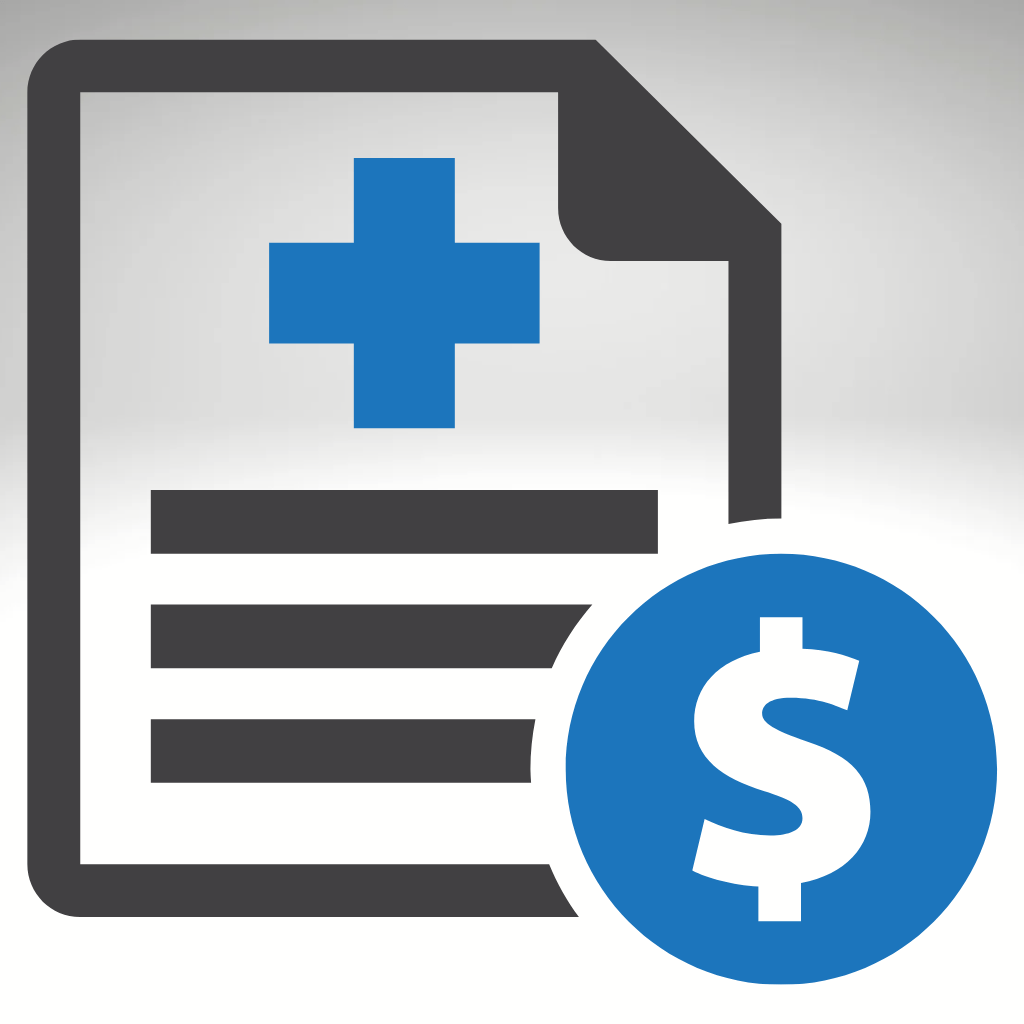
Let’s be honest—billing is where a lot of medical practices lose money without even realizing it. Claims get denied, payments take forever, and patients sometimes “forget” to pay their bills. Meanwhile, your staff is drowning in paperwork, chasing down insurance companies, and trying to fix coding mistakes that shouldn’t have happened in the first place.
The truth is, an inefficient billing process doesn’t just hurt your cash flow—it slows down your entire practice. Every denied claim means more back-and-forth, every missing prior authorization causes delays, and every unpaid patient balance adds up over time.
But here’s the good news: you don’t need a bigger billing team—you just need a smarter system. By making a few key changes, you can get claims paid faster, reduce denials, and make it easier for patients to pay (without your front desk turning into a debt collection agency).
11. Verify Insurance Eligibility Before Every Appointment
Nothing wrecks a schedule like finding out at check-in that a patient’s insurance has expired.
Avoid the chaos by automating insurance verification at the time of scheduling. Most EMR systems can do this in seconds, giving your staff a heads-up if there’s an issue before the patient arrives.
🔹 Bonus tip: If a patient’s coverage has changed, have a script ready for your staff to quickly explain payment options to avoid confusion.
12. Train Staff on Proper Coding (Avoid Costly Mistakes!)
Let’s be honest—billing errors are expensive. Whether it’s incorrect codes, missing modifiers, or underbilling services, even small mistakes can lead to delays, denials, and lost revenue.
The fix?
- Provide regular coding workshops for your team.
- Keep a quick-reference guide for common codes in your specialty.
- Use coding automation tools to catch errors before submission.
A little training now can prevent thousands of dollars in rejected claims later.
13. Use a Real-Time Claims Tracking System
The old way: Submitting claims and then crossing your fingers that they’ll get paid.
The new way: Tracking claims in real-time so you can spot and fix issues before they turn into denials.
Most clearinghouses or EMR billing systems allow you to see where each claim is in the process—whether it’s pending, rejected, or flagged for additional info.
🔹 Pro tip: Assign someone on your team to check claim statuses daily so nothing slips through the cracks.
14. Reduce Claim Denials by Analyzing Trends
If you’re seeing too many denied claims, don’t just fix them one by one—look for patterns.
Run a denial report and ask:
- Are claims being denied for the same reason over and over?
- Are certain payers rejecting claims more than others?
- Is a specific provider or service getting flagged frequently?
Once you find the root cause, you can adjust workflows to prevent those denials from happening in the first place. Less rework = faster payments.
15. Automate Prior Authorizations (And Save Hours of Staff Time)
Few things slow down revenue cycle management like waiting on insurance approvals.
Instead of calling and faxing (and waiting, and waiting…), switch to electronic prior authorization (ePA) tools. These systems can:
- Auto-submit prior auth requests directly to payers.
- Track approval statuses in real time.
- Flag alternative covered treatments if a request is denied.
This shaves off days from approval timelines and reduces manual work for your staff.
16. Offer Multiple Payment Options (Make It Easy for Patients to Pay!)
Let’s be honest—if paying is a hassle, patients won’t do it.
Make it easy by offering:
- Online payments through your patient portal.
- Tap-to-pay options at checkout.
- Text or email invoices with a one-click payment link.
- Flexible payment plans for high-cost services.
The easier you make it, the faster you’ll get paid.
17. Send Automated Patient Statements (No More Chasing Down Payments!)
Nobody likes making those awkward calls asking patients to pay their balance.
Instead of manually mailing statements, switch to automated billing reminders that go out via:
📩 Email
📲 Text message
💻 Patient portal notifications
🔹 Pro tip: Offer a small discount for patients who pay their balance in full within 30 days—it’s a great way to speed up collections.
18. Batch Claim Submissions for Faster Processing
Instead of submitting claims one at a time, process them in bulk—it saves time and speeds up reimbursement.
Most billing systems allow you to:
- Batch claims daily instead of weekly (faster turnaround).
- Group claims by payer to streamline submissions.
- Flag claims with missing info before they’re submitted.
Faster submission = faster payment.
19. Review & Renegotiate Payer Contracts Regularly
Do you know if your reimbursement rates are competitive?
If you haven’t reviewed your contracts in a while, you could be leaving money on the table.
Take time to:
- Compare reimbursement rates across different payers.
- Look for hidden clauses (like automatic rate reductions).
- Negotiate better terms for high-volume services in your practice.
Payers won’t offer better rates unless you ask—so don’t be afraid to negotiate!
20. Create a Billing Checklist (And Stick to It!)
One of the simplest ways to improve billing efficiency? Checklists.
Before submitting a claim, make sure:
- Insurance details are verified.
- The correct CPT & ICD-10 codes are used.
- Prior authorizations (if needed) are attached.
- All supporting documentation is included.
Having a step-by-step process helps prevent costly errors and ensures your claims get paid on the first try.
Make Your Billing Work for You
Billing and revenue cycle management doesn’t have to be a nightmare. The key is to work smarter, not harder:
- Automate where you can.
- Track trends to stop repeat denials.
- Make it as easy as possible for patients to pay.
Tackle just one or two of these strategies, and you’ll see a difference in your cash flow almost immediately.
EMR & Documentation Efficiency
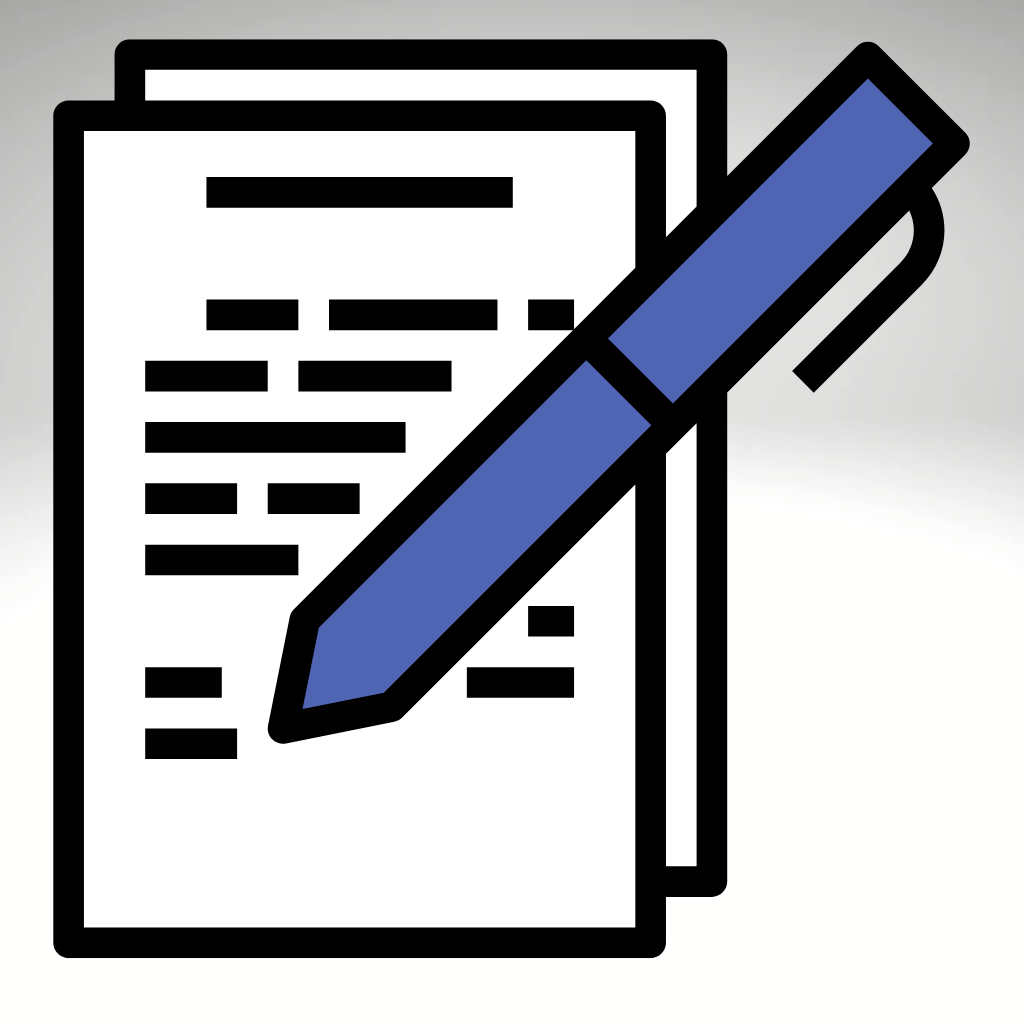
Let’s be honest—nobody became a doctor, nurse, or office manager because they love paperwork. And yet, here we are, spending hours every day clicking through EMRs, filling out forms, and trying to keep up with never-ending documentation requirements.
If you feel like you’re drowning in charts, you’re not alone. The average physician spends twice as much time on paperwork as they do with patients! That’s not just frustrating—it’s a massive time drain that leads to burnout, inefficiencies, and missed revenue opportunities.
So, how do we fix this? By working smarter, not harder.
21. Use Templates & Macros for Faster Charting
If you’re typing the same things over and over in patient notes, stop.
Most EMR systems allow you to create:
- Templates for common visits (annual physicals, follow-ups, chronic disease management).
- Smart phrases or macros that auto-fill frequently used text.
- Drop-down menus to select common diagnoses and treatments in one click.
Set these up once, and they’ll shave minutes off every chart—which adds up to hours saved every week.
22. Enable Voice-to-Text Dictation (Let AI Do the Typing for You)
Typing everything is exhausting. Instead, use a voice-to-text feature to dictate notes directly into the EMR.
Tools like Dragon Medical One, Suki AI, or built-in EMR dictation can transcribe in real-time, letting you:
🎙️ Speak your notes instead of typing them.
⏳ Cut documentation time in half.
🤯 Reduce the risk of carpal tunnel from all that keyboarding.
Bonus tip: If you don’t want to dictate in front of patients, record quick voice memos after each visit and have an AI scribe transcribe them later.
23. Pre-Fill Patient Data Before the Visit
Ever had a doctor spend the first five minutes flipping through a patient’s chart? It’s a total time suck.
Instead, have your staff pre-load essential information before the visit, including:
- Past diagnoses & medications.
- Reason for the visit.
- Insurance verification.
That way, the provider can dive straight into the actual appointment instead of playing catch-up.
24. Standardize Workflows to Reduce Clicks
Here’s the truth: EMRs are not designed for efficiency.
The more clicks, dropdowns, and pop-ups in your system, the more time you waste.
🔹 Fix it: Customize your EMR’s default settings to streamline workflows.
- Group related fields together so you’re not bouncing around multiple screens.
- Use hotkeys and shortcuts to reduce clicks.
- Minimize unnecessary pop-ups and alerts (not every reminder is urgent!).
A one-time setup tweak can save hundreds of clicks every day.
25. Implement AI-Powered Medical Scribes
AI has come a long way, and now AI scribes can help document visits while you focus on the patient.
Tools like DAX (Dragon Ambient Experience), Augmedix, or Suki AI can:
🤖 Listen to the conversation.
📄 Auto-generate notes based on the discussion.
✍️ Draft SOAP notes in real-time.
It’s like having a personal assistant that takes notes for you—without the extra payroll cost.
26. Limit Duplicate Documentation
If you’re entering the same patient data in multiple places, something’s wrong.
🔹 Fix it by:
- Using auto-fill fields to carry over data from previous visit.
- Syncing EMR, billing, and patient portals so data updates once and applies everywhere.
- Reducing redundant forms—patients shouldn’t have to fill out the same info every visit.
Less duplication = less work.
27. Use Pre-Visit Questionnaires
Instead of spending precious appointment time gathering basic info, let patients fill it out ahead of time.
🔹 Have them complete digital forms in the patient portal, including:
- Chief complaint & symptoms.
- Medication updates.
- Family history changes.
This allows providers to review the info before walking into the exam room, so visits stay focused and efficient.
28. Set a Time Limit for Charting
Ever catch yourself spending 30 minutes on a single patient note? You’re not alone.
Set a hard stop—for example, 10 minutes max per note—to force yourself to be concise.
🔹 How to stay on track:
- Stick to relevant details only (don’t over-document!).
- Use bullet points instead of paragraphs.
- If you need to add more details later, use a quick note for follow-up.
The goal is good documentation, not a novel.
29. Integrate Telehealth-Optimized EMRs
If your practice offers telehealth visits, your EMR should be built for it.
A good telehealth-friendly EMR allows you to:
📹 Launch video calls directly from the patient chart.
📄 Auto-save visit summaries instead of re-entering details manually.
📲 Bill telehealth visits correctly without extra steps.
If you’re using a separate telehealth platform that doesn’t sync with your EMR, you’re wasting way too much time.
30. Do Quarterly EMR Training Refreshers
Most medical staff only learn the basics of an EMR when they first start using it—but EMR systems constantly update with new features.
🔹 Fix it: Hold a quarterly training session to:
- Learn new shortcuts & efficiency hacks.
- Refresh on billing & coding integrations.
- Customize workflows to fit your practice’s needs.
Even one small efficiency tweak could save you hours in the long run.
Work Smarter, Not Harder
Your EMR should work for you, not against you. By automating documentation, reducing clicks, and using smart shortcuts, you can spend less time charting and more time on patient care.
Challenge for this week: Try just one of these tips—whether it’s voice dictation, templates, or pre-loading charts—and see how much time you save.
Staff Productivity & Workflow Optimization

Running a medical practice is a team effort—and if your staff is overworked, undertrained, or constantly putting out fires, your entire operation slows to a crawl.
Think about it: Every minute wasted on disorganized workflows, unclear job roles, or endless back-and-forth communication adds up. If your front desk is drowning in calls, your nurses are stuck waiting on approvals, or your providers are scrambling to catch up between patients, efficiency goes out the window.
The good news? You don’t need more staff—you just need better systems. With the right strategies, you can reduce burnout, boost productivity, and create a workflow that actually makes sense.
31. Clearly Define Roles & Responsibilities
If your staff doesn’t know exactly what’s expected of them, you’ll see tasks slipping through the cracks or being duplicated unnecessarily.
🔹 Fix it:
- Create written job descriptions for every role in the office.
- Use a daily task checklist so everyone knows what needs to get done.
- Assign clear responsibilities for tasks like prior authorizations, follow-up calls, and insurance verification.
When everyone knows who does what, things get done faster and more efficiently.
32. Cross-Train Employees to Handle Multiple Roles
Picture this: Your front desk staff calls out sick, and suddenly no one knows how to check in patients or verify insurance. Chaos, right?
Avoid bottlenecks by cross-training your team so they can step in when needed.
- Train medical assistants on basic front desk tasks.
- Teach billing staff how to verify insurance.
- Make sure everyone knows how to document in the EMR properly.
This way, your practice never grinds to a halt just because one person is out.
33. Reduce Meeting Overload (Nobody Likes Unnecessary Meetings!)
Meetings are important—but let’s be real, most of them could’ve been an email.
🔹 Fix it:
- Replace long meetings with quick 5-minute huddles to go over daily priorities.
- Use a shared digital dashboard (like Slack or Microsoft Teams) for updates instead of calling a meeting.
- Have weekly goal check-ins instead of unnecessary daily check-ins.
Your team will thank you for fewer meetings—and they’ll have more time to get actual work done.
34. Automate Repetitive Tasks
If your staff is manually sending appointment reminders, tracking down unpaid bills, or re-entering data, you’re wasting time that could be better spent on patient care.
🔹 What to automate:
- Appointment reminders (via text, email, or phone).
- Patient follow-ups (send automated post-visit surveys).
- Claim tracking & denial management (use billing software with alerts).
Automation lightens the load for your team and reduces human errors.
35. Use Time-Blocking to Prevent Interruptions
Constant interruptions kill productivity. If staff are juggling phone calls, paperwork, and patient check-ins all at once, nothing gets done efficiently.
🔹 Fix it with time-blocking:
- Dedicate specific times for calls, paperwork, and patient interactions.
- Have your billing team process claims in batches instead of one at a time.
- Set up a “quiet hour” each day for staff to focus on deep work.
This prevents multitasking overload and makes your team more effective.
36. Create an Easy-to-Follow Task Board
If your office is constantly playing catch-up, a shared task board can help keep everything on track.
🔹 How to do it:
- Use a whiteboard, spreadsheet, or digital tool (Trello, Asana, etc.)
- List out daily, weekly, and monthly tasks for each department.
- Assign tasks so everyone knows who’s responsible for what.
When everything is visible, it’s easier to prioritize and stay on top of tasks.
37. Set Key Performance Indicators (KPIs) to Track Efficiency
Want to know if your team is actually working efficiently? You need hard data—not just a feeling.
🔹 Track things like:
- Average patient wait time
- Number of claims processed per day
- Call resolution time (how quickly front desk staff resolve patient inquiries)
Once you know where the bottlenecks are, you can make data-driven improvements.
38. Reduce Front Desk Bottlenecks
Your front desk is the nerve center of your practice—if it’s slow, everything else slows down too.
🔹 Quick fixes:
- Offer self-check-in kiosks or mobile check-in.
- Have patients fill out forms online before their visit.
- Use caller ID with patient records pulled up instantly to speed up phone calls.
Less time spent on paperwork and admin tasks = more time for actual patient care.
39. Reward & Recognize High Performers
Want your staff to stay motivated and efficient? Recognize their hard work!
🔹 Ways to do this:
- Give shoutouts in team meetings for top performers.
- Offer small incentives (gift cards, extra break time, or a staff lunch).
- Celebrate when the team hits efficiency goals (like reducing claim denials or improving patient wait times).
Happy employees work harder, faster, and more efficiently.
40. Encourage Staff to Give Feedback on Workflow Problems
Your team is on the front lines every day—they know exactly where processes are broken.
🔹 Make it easy for them to share ideas:
- Have an anonymous suggestion box (digital or physical)
- Hold quarterly workflow improvement meetings.
- Actually implement good ideas and show staff that their input matters.
When employees feel heard, they’re more engaged and proactive in improving efficiency.
A Smooth-Running Team = A Smooth-Running Practice
At the end of the day, your staff is the engine that keeps your practice moving. If workflows are messy, roles aren’t clear, or people are constantly overwhelmed, productivity tanks and frustration builds.
But with the right systems, automation, and teamwork strategies, you can turn things around.
Challenge for this week: Pick one of these strategies—whether it’s time-blocking, automation, or workflow tracking—and see how much smoother things get.
Patient Experience & Satisfaction
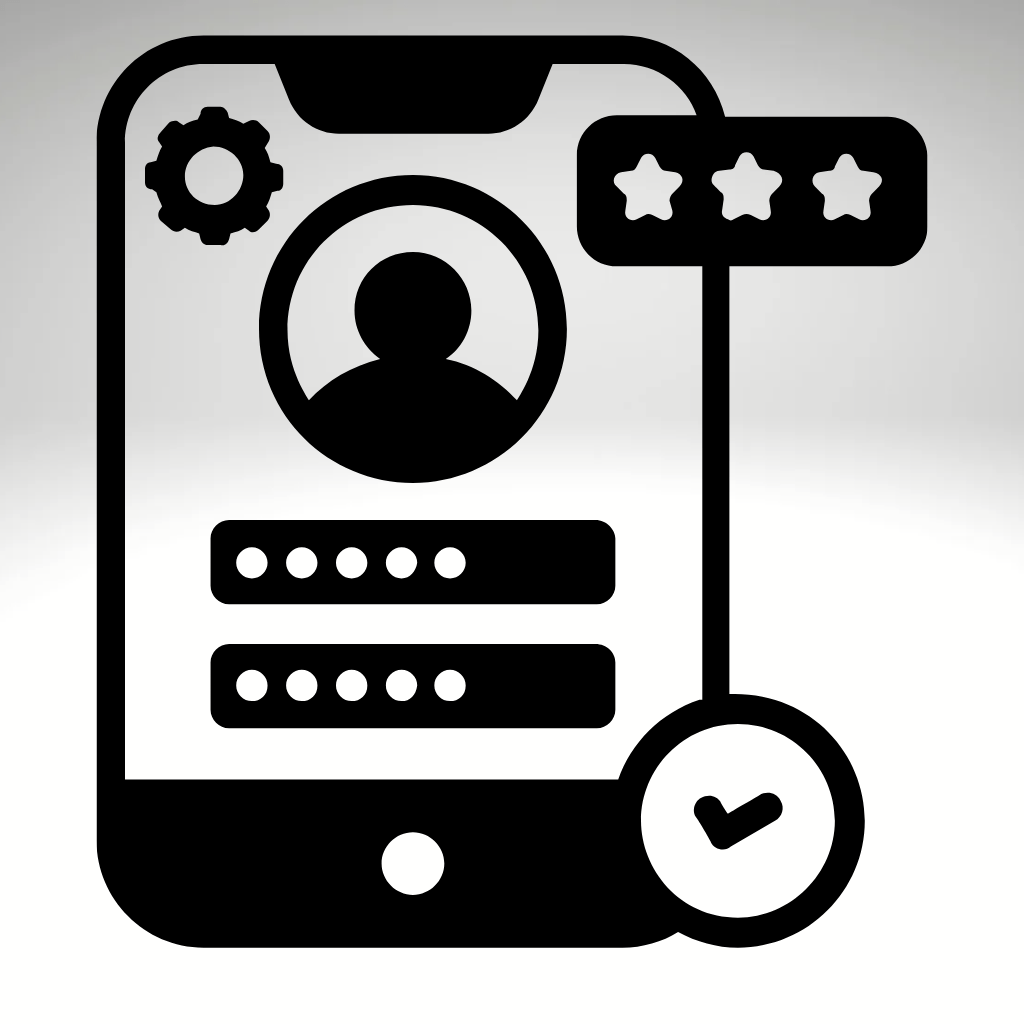
Let’s face it—your patients have options. If they feel ignored, frustrated by long wait times, or like they’re just another number in the system, they won’t hesitate to find another provider.
The best practices aren’t just efficient behind the scenes—they also prioritize the patient experience. A smooth, stress-free visit can mean the difference between a loyal, long-term patient and one who never comes back.
So, how do you keep patients happy while still running an efficient practice? By creating a seamless, hassle-free experience at every touchpoint.
41. Reduce Wait Times (Because Nobody Likes Waiting)
We all know long waits = frustrated patients. And let’s be honest, nobody enjoys sitting in a waiting room, scrolling through their phone for 45 minutes wondering when they’ll be called back.
🔹 How to fix it:
- Stagger appointments to avoid bottlenecks.
- Offer real-time text updates for delays.
- Track average wait times in your EMR and find ways to improve.
Patients appreciate transparency—if there’s a delay, keep them informed!
42. Let Patients Check In Digitally
Filling out paper forms in the waiting room? That’s so 1999.
🔹 Upgrade the experience by offering:
- Mobile check-in from their phone.
- Self-check-in kiosks at the front desk.
- Online forms they can fill out before they arrive.
Less time spent on paperwork = a faster, smoother visit.
43. Train Staff on Friendly, Efficient Communication
A patient’s first impression starts the moment they call your office. If they’re met with rude, rushed, or unhelpful staff, it doesn’t matter how good your providers are—they won’t come back.
🔹 Fix it by:
- Training staff to greet every patient warmly (in person and on the phone)
- Teaching active listening skills so patients feel heard.
- Encouraging eye contact & a friendly tone—little things make a big difference!
Patients should feel welcomed, not like an inconvenience.
44. Follow Up After Appointments (It’s a Game-Changer)
Most practices forget about patients as soon as they walk out the door. But the best ones? Stay in touch.
🔹 How to do it:
- Send a quick text or email checking in on them.
- Offer a patient satisfaction survey to get feedback.
- Remind them of next steps (follow-ups, referrals, medication adjustments).
This extra touch makes patients feel valued and cared for—and keeps them coming back.
45. Make It Easy for Patients to Contact You
Ever tried calling a doctor’s office and got stuck in voicemail purgatory? It’s frustrating!
🔹 Fix it by:
- Offering a patient portal for messaging and quick questions.
- Using chatbots or live chat on your website for simple inquiries.
- Having call-back options instead of making patients wait on hold.
Pro tip: If your phones are constantly jammed, analyze call volume trends and adjust staffing accordingly.
46. Offer Multiple Payment Options (Because Nobody Carries Cash Anymore)
Nothing kills a patient’s mood faster than a frustrating checkout process.
🔹 Make payments easy by offering:
- Online payment options through your patient portal.
- Contactless tap-to-pay at checkout.
- Text reminders for outstanding balances with a one-click payment link.
When paying is convenient, patients are more likely to settle their bills on time.
47. Keep the Waiting Room Comfortable & Engaging
If patients have to wait, at least make it a pleasant experience.
🔹 Quick upgrades:
- Offer free Wi-Fi (because scrolling through old magazines is not fun).
- Keep the space clean, organized, and welcoming.
- Provide educational content on a TV screen—helpful and engaging!
A well-designed waiting room sets the tone for the entire visit.
48. Send Appointment Reminders (And Let Patients Reschedule Easily)
Patients forget appointments—it happens. But missed appointments cost your practice time and money.
🔹 How to prevent no-shows:
- Send automated text/email reminders.
- Allow one-click rescheduling (instead of making them call).
- Offer next-day reminder texts with location details.
The easier it is to reschedule, the less likely they’ll ghost you.
49. Personalize the Patient Experience
Nobody wants to feel like just another name on a chart.
🔹 Ways to make it personal:
- Train staff to use the patient’s name often during the visit.
- Note personal details (hobbies, job, family) in the EMR to bring up in conversation.
- Send birthday messages or special health tips based on their conditions.
A little effort goes a long way in making patients feel valued and respected.
50. Encourage & Respond to Patient Reviews
Patients trust online reviews just like they do personal recommendations. If you don’t have a strategy for getting and responding to reviews, you’re missing out on new patients.
🔹 What to do:
- Ask satisfied patients to leave a Google or Yelp review.
- Respond to all reviews (good and bad) professionally.
- Address complaints quickly to show you care.
A strong online reputation = a growing practice.
Power of Patient Reviews: Growing Your Practice in the Digital Age
A Happy Patient is a Loyal Patient
Improving patient experience isn’t just about keeping people happy—it’s about keeping them coming back. If your practice is efficient, welcoming, and easy to navigate, patients will stick with you.
Challenge for this week: Pick one of these strategies—maybe it’s better appointment reminders, online check-in, or friendlier front desk communication—and see how patients respond.
Financial Efficiency & Cost-Saving Measures
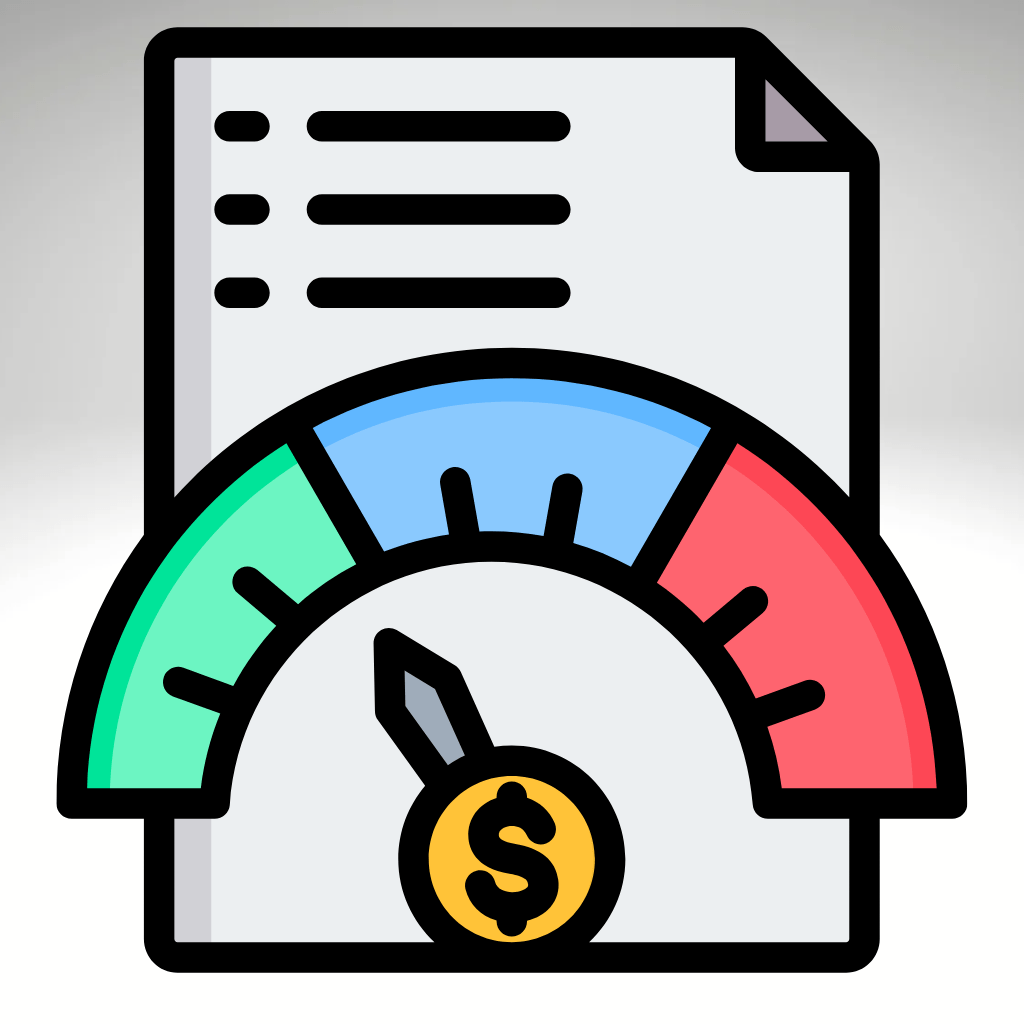
Let’s talk about money—because running a medical practice is expensive, and if you’re not careful, costs can spiral out of control.
Think about it: High overhead, wasteful spending, and inefficiencies in billing or supply management can quietly eat away at your profits. And if your revenue cycle isn’t optimized, you’re probably leaving thousands of dollars on the table every month.
But here’s the good news—cutting costs doesn’t mean cutting quality. In fact, a financially efficient practice is often a better-run, less stressful one.
51. Automate Supply Ordering to Prevent Overstocking
Ever looked around your storage room and thought, “Why do we have 500 extra gloves but no printer ink?”
🔹 How to fix it:
- Use inventory management software that tracks supply levels and auto-orders when stock runs low.
- Set par levels so you’re only buying what you actually need.
- Negotiate bulk discounts for high-usage items.
Smart supply management prevents waste and unnecessary spending.
Inventory Management Software For 2025
52. Join a Group Purchasing Organization (GPO) for Discounts
You don’t have to go it alone. GPOs negotiate better prices for medical supplies, equipment, and even office essentials—because bulk buying power saves you money.
🔹 How to get started:
- Research medical GPOs that fit your specialty (some are free, others have small fees).
- Compare the pricing they offer vs. your current vendors.
- If it makes sense, switch—you could save 20-30% on common purchases.
When your margins are tight, even small savings add up fast.
53. Analyze & Negotiate Vendor Contracts Annually
Your medical waste disposal, IT services, and EMR providers all have contracts—but when was the last time you reviewed them?
🔹 Action plan:
- Make a list of every vendor contract (medical supplies, billing software, lab services, etc.).
- Compare costs to what’s currently available in the market.
- Negotiate better rates or look for competitive alternatives.
Vendors don’t just offer better deals out of kindness—you have to ask.
54. Go Paperless & Reduce Printing Costs
Faxing, printing, and filing paper records costs way more than you think—not just in materials, but in time and storage.
🔹 How to cut costs:
- Switch to digital forms & e-signatures (patients prefer it!).
- Use secure digital faxing instead of old-school fax machines.
- Store records securely in the cloud instead of using filing cabinets.
Less paper = lower costs and better efficiency.
55. Track & Reduce Overtime Costs
Overtime is one of the sneakiest budget killers—it adds up fast, and if it becomes routine, something is wrong with your scheduling.
🔹 How to fix it:
- Monitor overtime trends (who’s logging the most, and why?).
- Adjust staffing levels to match peak and slow times.
- Consider cross-training employees so workloads are spread more evenly.
Paying for a few extra hours here and there adds up to thousands of dollars a year—so don’t ignore it!
7 Essential Tips for Improving Operational Efficiency in Healthcare
56. Optimize Your Billing Process to Capture More Revenue
You’re not just losing money on expenses—you’re probably leaving money on the table if your billing process isn’t airtight.
🔹 Make sure you’re:
- Coding correctly to prevent underbilling.
- Submitting clean claims the first time to avoid costly rework.
- Using batch claim submissions for faster processing.
- Following up on denied claims immediately instead of letting them pile up.
More efficiency = more money in your pocket.
Reducing Claim Denials and Ensuring Timely Reimbursements: Top 10 Game-Changing Tips
57. Offer Telehealth to Cut Overhead Costs
Seeing patients in-office costs more than seeing them virtually.
🔹 How telehealth saves money:
- Reduces exam room usage & staff workload.
- Cuts down on no-shows (patients are more likely to attend virtual visits).
- Allows you to see more patients in less time.
It’s a win-win: Patients love the convenience, and your practice saves money on overhead.
58. Review Your Insurance Reimbursement Rates
Are you getting paid what you deserve for your services? If you haven’t checked your reimbursement rates in a while, you might be underpaid.
🔹 Steps to take:
- Review payer contracts and compare your reimbursement rates to industry benchmarks.
- If you find that your rates are low, negotiate with insurers (especially for high-volume services).
- Drop low-paying contracts if they’re costing you more than they’re worth.
Don’t assume insurance companies have your best interests in mind—you have to advocate for your practice’s financial health.
59. Consolidate Loans or Renegotiate Interest Rates
If your practice has outstanding loans, refinancing could save you thousands in interest over time.
🔹 What to do:
- Compare interest rates from different lenders.
- Consider refinancing to lower monthly payments.
- Negotiate with your current lender—sometimes, they’ll lower your rate to keep your business.
Every percentage point saved on interest rates = more cash flow for your practice.
60. Outsource When It Makes Financial Sense
Some tasks are cheaper to outsource than to handle in-house—especially if they take up too much time and resources.
🔹 Consider outsourcing:
- Medical billing (if denials and collections are draining your staff).
- IT & cybersecurity (instead of hiring a full-time IT person).
- Marketing & social media (if it’s not your team’s strong suit).
If outsourcing costs less than hiring another full-time employee, it’s worth considering.
Cut Costs Without Cutting Quality
The goal isn’t just to save money—it’s to run a smarter, leaner, and more profitable practice. By reducing waste, optimizing your billing, and negotiating better contracts, you can improve cash flow without sacrificing patient care.
Challenge for this week: Pick one of these strategies—whether it’s negotiating a vendor contract, switching to digital forms, or tracking overtime—and see how much you can save!
Compliance & Security
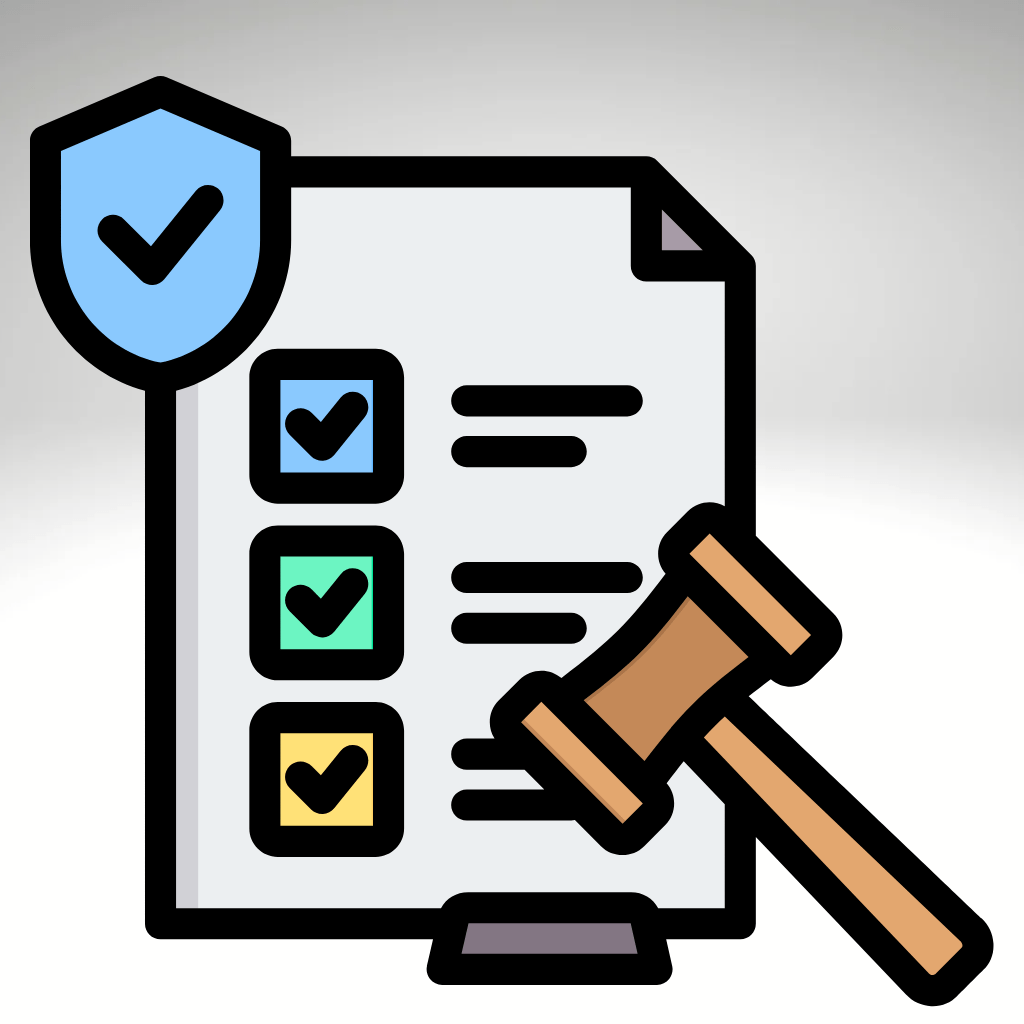
Nobody likes talking about compliance and security—until something goes wrong. And in healthcare, “going wrong” can mean massive fines, lawsuits, and a serious hit to your reputation.
From HIPAA violations to cybersecurity threats, medical practices are prime targets for data breaches and compliance missteps. The worst part? Most violations aren’t due to malicious intent—they’re because of simple, preventable mistakes.
But here’s the good news: Keeping your practice compliant and secure doesn’t have to be overwhelming. With the right processes in place, you can protect patient data, avoid costly penalties, and keep your practice running smoothly.
61. Conduct Regular HIPAA Training (Yes, Even for Longtime Staff)
Here’s the thing: HIPAA violations don’t just happen because of hackers—they happen because of human error.
🔹 How to prevent it:
- Provide HIPAA training for all new hires (before they touch patient data).
- Hold annual refresher courses to keep policies top of mind.
- Test staff with real-world scenarios (e.g., “What would you do if a patient’s spouse asks for their records?”).
Even experienced staff need reminders—because compliance mistakes can cost your practice thousands of dollars.
62. Use Multi-Factor Authentication (MFA) for All Logins
One of the biggest security threats? Weak passwords. If your team is still using “password123”, it’s only a matter of time before a hacker gets in.
🔹 Quick fix:
- Require multi-factor authentication (MFA) for EMR, billing, and patient portals.
- Use password managers to generate and store strong passwords.
- Set up auto-logouts after periods of inactivity.
Hackers love easy targets—don’t be one of them.
63. Encrypt All Patient Communications
Emailing patient records? Faxing sensitive information? If it’s not encrypted, it’s not secure.
🔹 How to stay compliant:
- Use secure, HIPAA-compliant email for patient communication.
- Make sure your EMR uses end-to-end encryption.
- If you must fax, use digital, encrypted fax services instead of old-school fax machines.
Encryption ensures only the right people can access sensitive data—not hackers or unauthorized staff.
64. Limit Access to Sensitive Data (Not Everyone Needs to See Everything)
Not every staff member needs full access to patient records. The more people who can see sensitive data, the higher the risk of a breach.
🔹 Set up role-based access controls:
- Front desk staff should only access scheduling & insurance verification.
- Billing teams should see financial records—but not clinical notes.
- Providers should have full access—but only for their own patients.
If someone doesn’t need access to do their job, don’t give it to them.
65. Implement Automatic Logouts on Workstations
Ever walked past an open computer screen in a busy medical office? If patient data is visible, that’s a HIPAA violation waiting to happen.
🔹 Fix it with auto-logouts:
- Set computers to lock after 5 minutes of inactivity.
- Require a password to unlock screens.
- Make sure staff never share login credentials.
It’s a simple security measure that can prevent big problems.
66. Conduct Regular Cybersecurity Audits
Think your systems are secure? Unless you’re testing them regularly, you really don’t know.
🔹 What to audit:
- Check for outdated software (older programs = easy targets for hackers).
- Scan for unauthorized access attempts in your EMR and billing system.
- Have an IT security expert run penetration tests (simulated cyberattacks) to identify vulnerabilities.
Waiting until something goes wrong is too late—stay ahead of threats.
67. Have a Disaster Recovery Plan (Because Things Will Go Wrong)
If your system crashed tomorrow, would you still be able to access patient records? If the answer is “I’m not sure”, you need a backup plan—yesterday.
🔹 How to prepare:
- Back up all patient data regularly (to a secure, HIPAA-compliant cloud storage).
- Have an emergency action plan for system failures or cyberattacks.
- Make sure staff knows who to contact and what steps to follow in a security breach.
When disaster strikes, having a plan can be the difference between a minor hiccup and a full-blown crisis.
68. Monitor for Suspicious Activity (Red Flags = Big Problems)
Not every security threat comes from outside your practice—sometimes, it’s internal.
🔹 Red flags to watch for:
- 🚩 Staff accessing records they shouldn’t be looking at.
- 🚩 Multiple failed login attempts (could be a hacking attempt).
- 🚩 Patient data being accessed at odd hours.
🔹 What to do:
- Set up audit logs in your EMR to track user activity.
- Regularly review who is accessing what data.
- Investigate any suspicious behavior immediately.
Catching security issues early prevents bigger problems down the road.
69. Ensure Third-Party Vendors Are HIPAA-Compliant
If you work with a billing company, IT support, or cloud storage provider, their security weaknesses become your problem.
🔹 Protect your practice by:
- Making sure all vendors sign a Business Associate Agreement (BAA).
- Asking how they store, access, and protect patient data.
- Not assuming that just because they work in healthcare, they’re HIPAA-compliant.
If a vendor gets hacked, your practice is still responsible for protecting patient data.
70. Stay Updated on Compliance Changes
HIPAA, OSHA, and cybersecurity regulations change constantly—and if you’re not keeping up, you could accidentally fall out of compliance.
🔹 How to stay ahead:
- Subscribe to compliance newsletters (HHS.gov, OCR updates, cybersecurity alerts).
- Assign a compliance officer in your practice to track updates.
- Hold quarterly compliance check-ins to make sure everything is up to date.
What was fine last year might not be fine this year—stay informed!
Compliance Isn’t Just a Legal Issue—It’s a Trust Issue
When patients visit your practice, they trust you with their most sensitive information. Keeping their data safe isn’t just about avoiding fines—it’s about protecting their privacy and maintaining their confidence in your care.
Challenge for this week: Choose one of these security measures—whether it’s updating passwords, limiting data access, or encrypting patient communications—and take action. Your patients (and your stress levels) will thank you.
Marketing & Patient Engagement

Here’s the thing—your practice could be the best in town, but if patients don’t know about you, it doesn’t matter.
Many medical practices struggle with marketing, thinking it’s too complicated, too expensive, or just not necessary. But in today’s digital world, patients expect more than just great care—they want easy access, clear communication, and a practice that feels connected to them.
The good news? You don’t need a massive budget or a full-time marketing team to attract and retain patients. With the right strategies, you can grow your practice, keep patients engaged, and build long-term loyalty—all without overwhelming your staff.
71. Keep Your Google Business Profile Updated (It’s a Goldmine for New Patients)
When people search for a doctor, what’s the first thing they do? Google it.
🔹 How to optimize your Google Business Profile:
- Keep your address, phone number, and hours updated.
- Add real photos of your office so new patients know what to expect.
- Encourage satisfied patients to leave reviews (more on that later).
The more complete and active your profile, the higher you rank in search results—which means more new patients finding you online.
72. Make Your Website Mobile-Friendly (Because Nobody Likes Zooming In to Read Tiny Text)
If your website looks like it was built in 2005, you’re losing patients.
🔹 What a great medical website should have:
- A clean, modern design that’s easy to navigate.
- Online scheduling so patients can book without calling.
- A FAQ section answering common questions about insurance, billing, and services.
Pro tip: 80% of website visitors are on their phones—so make sure your site is optimized for mobile.
73. Stay Active on Social Media (Yes, Even for Medical Practices)
Social media isn’t just for influencers and cat videos—it’s one of the best ways to engage with current and potential patients.
🔹 What to post?
- Quick health tips (e.g., “Flu season is here—here’s how to protect yourself!”).
- Behind-the-scenes office updates (introduce new staff, show off your waiting area).
- Patient testimonials (with permission, of course!).
Being active on social media builds trust and keeps your practice top of mind.
74. Offer Online Appointment Scheduling (Because Nobody Likes Calling a Doctor’s Office)
Patients today expect convenience. If scheduling an appointment means waiting on hold, they might go somewhere else.
🔹 Make it easier by:
- Offering online scheduling through your website or patient portal.
- Sending text reminders with a “Confirm” or “Reschedule” button.
- Using AI chatbots for basic appointment inquiries.
The easier you make booking an appointment, the fewer no-shows you’ll have.
75. Encourage & Respond to Patient Reviews (Yes, Even the Bad Ones)
Love it or hate it, online reviews matter. Patients trust them as much as personal recommendations.
🔹 How to boost your reviews:
- Ask happy patients to leave a quick Google or Yelp review after their visit.
- Make it easy—send a text with a direct link to your review page.
- Always respond to reviews (good and bad) to show you care.
A strong online reputation = more patients choosing your practice.
Power of Patient Reviews: Growing Your Practice in the Digital Age
76. Send Engaging Patient Newsletters (Not Just Boring Reminders)
If your patient emails only include appointment reminders and billing notices, you’re missing an opportunity to connect.
🔹 What to include in a great newsletter?
- Seasonal health tips & updates (e.g., “How to Avoid Spring Allergies”).
- Office news (new services, staff spotlights).
- Patient success stories (with permission).
This keeps patients engaged between visits and builds long-term relationships.
77. Partner with Local Businesses & Events
Marketing isn’t just online—getting involved in your community is a great way to attract local patients.
🔹 Ideas for partnerships:
- Team up with local gyms or wellness centers for cross-promotions.
- Sponsor community health events (free blood pressure checks, flu shot clinics).
- Get featured in local newspapers or magazines to increase visibility.
The more your practice is seen in the community, the more people will trust you.
78. Use Video Marketing (Because People Love Watching Over Reading)
Want to make your practice stand out? Start using videos.
🔹 Easy video ideas:
- A quick office tour so new patients feel comfortable.
- Short Q&A videos answering common health concerns.
- “Meet the Doctor” intros to build a personal connection.
You don’t need fancy equipment—just a smartphone and good lighting. Videos help humanize your practice and boost engagement.
12 Tips to Improve Efficiency in Healthcare
79. Offer a Loyalty or Referral Program
Your best source of new patients? Happy existing patients.
🔹 How to encourage referrals:
- Offer a small incentive (discounts on services, gift cards, or branded swag)
- Create a “Refer a Friend” campaign and promote it via email or social media.
- Thank patients personally when they refer someone.
Word-of-mouth referrals are gold—make sure you’re encouraging them!
80. Make Patient Communication Easy & Accessible
Nothing frustrates patients more than not being able to reach their doctor when they need to.
🔹 How to improve communication:
- Use secure patient messaging through your portal.
- Offer text updates & reminders for upcoming visits.
- Make sure your phone system is easy to navigate (no endless menu loops!).
When patients feel heard and valued, they’re more likely to stay loyal to your practice.
Make Your Practice Easy to Find & Hard to Forget
At the end of the day, marketing isn’t just about getting new patients—it’s about keeping them engaged and loyal. The more visible, accessible, and approachable your practice is, the stronger your reputation and patient base will be.
Challenge for this week: Pick one marketing strategy—whether it’s updating your Google profile, sending a newsletter, or posting on social media—and try it out! You might be surprised at how quickly you see results.
Data & Performance Tracking

Let’s be real—you can’t fix what you don’t measure.
Most medical practices are so busy keeping up with day-to-day operations that they don’t stop to ask:
- How efficient are we, really?
- Are we losing revenue without realizing it?
- What’s slowing us down?
If you’re not tracking key performance indicators (KPIs), you’re flying blind. Data isn’t just for big hospitals—it’s for every practice that wants to improve efficiency, increase revenue, and deliver better patient care.
The good news? You don’t need to be a data nerd to make this work. Just tracking a few key numbers can help you spot patterns, fix problems, and run a smoother practice.
81. Average Patient Wait Time (Because Nobody Likes Waiting)
We already talked about how long wait times frustrate patients, but let’s put some numbers on it.
🔹 What to track:
- Check-in to exam room time
- Exam room to provider time
- Total visit length
If your average wait time is too long, look at:
- Scheduling efficiency (Are appointments overbooked?)
- Provider time management (Are certain visits running too long?)
- Check-in process (Is paperwork slowing things down?)
Even cutting wait times by a few minutes per visit can improve patient satisfaction AND increase daily appointment volume.
8 Proven Time Management Strategies for Healthcare Professionals
82. No-Show & Cancellation Rate (Because Empty Slots Cost You Money)
Every missed appointment is lost revenue—and if you don’t know how often it’s happening, you can’t fix it.
🔹 Track:
- How many patients cancel or no-show?
- What days/times have the highest no-show rates?
- Do certain providers have higher no-show rates than others?
🔹 How to fix it:
- Automated appointment reminders (text, email, phone calls).
- Waitlist system to fill last-minute openings.
- Offer telehealth for quick reschedules.
A high no-show rate isn’t just a scheduling issue—it’s a revenue issue.
83. Claim Denial Rate (Are You Leaving Money on the Table?)
If too many claims are getting denied, your billing process needs work.
🔹 Track:
- Percentage of claims denied per month.
- Most common denial reasons (coding errors, missing prior auth, eligibility issues).
- Which payers deny the most claims?
🔹 How to fix it:
- Train staff on common billing mistakes.
- Implement real-time insurance verification.
- Use claim scrubbing software to catch errors before submission.
Fewer denials = more money in your pocket.
84. Time to Claim Payment (How Long Does It Take to Get Paid?)
You did the work—how long does it take to actually get paid?
🔹 Track:
- Average time from claim submission to reimbursement.
- Which payers take the longest to process claims?
- Which services get paid the fastest?
🔹 How to speed up payments:
- Submit claims daily (not weekly!).
- Set up electronic funds transfer (EFT) payments.
- Follow up on unpaid claims aggressively.
Cash flow matters—don’t let insurance companies hold your money hostage.
10 Tips for Improving Medical Practice Efficiency
85. Patient Retention Rate (Are People Coming Back?)
New patients are great, but if you’re not keeping them, something’s wrong.
🔹 Track:
- How many patients return for follow-ups?
- Do patients complete their treatment plans?
- How many patients schedule another appointment within 12 months?
🔹 How to improve retention:
- Send recall reminders for annual checkups.
- Offer membership plans for cash-pay patients.
- Make sure follow-ups are scheduled before patients leave.
A high retention rate means patients trust you—and that’s the foundation of a successful practice.
86. Staff Productivity Metrics (Is Your Team Working Efficiently?)
Your staff keeps the practice running—but are they spending too much time on the wrong things?
🔹 Track:
- How many patients does each provider see per day?
- How long does check-in take per patient?
- How many claims does the billing team process daily?
🔹 How to improve:
- Automate repetitive tasks (appointment reminders, billing, paperwork).
- Use time-blocking to reduce multitasking.
- Cross-train staff to handle multiple roles.
Efficiency isn’t about working harder—it’s about working smarter.
13 Tips for Improving Clinical Efficiency With Smaller Staff
87. Online Review Score (Because Reputation Matters)
What are patients saying about you online? If your Google or Yelp rating is low, it could be hurting your practice.
🔹 Track:
- Your average review score.
- How many new reviews you get each month.
- Common themes in feedback (positive or negative).
🔹 How to improve:
- Ask happy patients to leave reviews.
- Respond to ALL reviews (good & bad) professionally.
- Fix common complaints (long waits, rude staff, billing issues).
Online reputation is everything—make sure yours reflects the quality of care you provide.
88. Referral Sources (Where Are New Patients Coming From?)
If you’re spending money on marketing, you need to know what’s working.
🔹 Track:
- How many patients come from word-of-mouth referrals?
- How many find you through Google, social media, or ads?
- Which marketing channels bring in the most high-quality patients?
🔹 How to use this data:
- Double down on what’s working (more budget for successful ads).
- Adjust strategies for what’s not working (drop low-performing campaigns).
- Strengthen referral programs for happy patients and partner providers.
Marketing without data is just guessing—know what works and invest accordingly.
89. Revenue Per Visit (Are You Maximizing Each Appointment?)
Every patient visit costs you time and resources—are you earning enough to make it worth it?
🔹 Track:
- Average revenue per visit.
- Which services are most profitable?
- Which services are underperforming?
🔹 How to increase revenue per visit:
- Offer add-on services (flu shots, wellness screenings, IV therapy).
- Improve billing accuracy so nothing gets undercoded.
- Train staff to educate patients on additional treatment options.
More value per visit = higher profitability with the same patient volume.
90. Patient Satisfaction Score (Are People Happy?)
At the end of the day, happy patients = a successful practice.
🔹 How to measure it:
- Send post-visit surveys.
- Track complaints & feedback trends.
- Monitor referral rates (happy patients send friends & family).
🔹 How to improve:
- Fix common frustrations (wait times, billing issues, communication gaps).
- Train staff to be warm, welcoming, and responsive.
- Always follow up with patients who had a negative experience.
Happy patients come back, refer others, and leave great reviews—so make their experience a priority.
Data = Power
If you’re not tracking these metrics, you’re guessing—and in a competitive healthcare world, guessing isn’t enough.
Challenge for this week: Pick one metric to track—whether it’s no-show rates, claim denials, or patient satisfaction—and start improving it. Even small tweaks can make a massive difference.
Mindset & Leadership

Let’s be honest—a medical practice is only as strong as the people running it.
You can have the best systems, the most efficient workflows, and all the latest technology, but if leadership is weak, things will fall apart fast. Staff gets frustrated, patients notice the chaos, and burnout spreads like wildfire.
But here’s the thing—great leadership isn’t about micromanaging or knowing all the answers. It’s about setting the vision, building a strong culture, and creating an environment where your team can thrive.
91. Foster a Culture of Continuous Improvement (Because Good Enough Isn’t Enough)
A thriving practice never stops evolving. If your team is stuck in “we’ve always done it this way” mode, growth and efficiency will stall.
🔹 How to create a culture of improvement:
- Encourage staff to bring ideas to improve workflows.
- Hold quarterly “efficiency check-ins” to assess what’s working and what’s not.
- Be open to change—whether it’s new technology, scheduling tweaks, or better training methods.
The best leaders don’t have all the answers—they empower their teams to help find them.
92. Encourage Staff Feedback (And Actually Listen to It!)
Nobody knows the day-to-day challenges of your practice better than your team. If they feel unheard, they stop caring—and efficiency suffers.
🔹 How to get real, honest feedback:
- Have an anonymous suggestion box (digital or physical).
- Hold monthly “What’s Working & What’s Not” meetings.
- Show that you value their input by implementing good ideas.
Your staff is your greatest resource—use it!
93. Lead by Example (Because Actions Speak Louder Than Words)
If you expect your team to be organized, professional, and efficient, you need to show them how it’s done.
🔹 Ways to lead by example:
- Be punctual, prepared, and professional—just like you expect from your team.
- Stay calm under pressure—how you handle stress sets the tone for everyone else.
- Embrace new technology and processes instead of resisting change.
Leadership isn’t about telling people what to do—it’s about showing them what’s possible.
94. Set SMART Goals (Because “Do Better” Isn’t a Strategy)
Saying “we need to improve efficiency” is too vague to be useful. You need goals that are:
- Specific (What exactly are you improving?)
- Measurable (How will you track progress?)
- Achievable (Is this realistic?)
- Relevant (Does it align with your practice’s needs?)
- Time-bound (When will you achieve it?)
🔹 Example: Instead of “Reduce wait times,” say:
“Reduce average patient wait time from 30 minutes to 20 minutes within the next 3 months.”
Clear goals = clear progress.
95. Invest in Leadership Training for Yourself & Your Managers
Nobody is born a great leader—it’s a skill that needs to be developed.
🔹 Ways to build leadership skills:
- Attend medical practice management workshops.
- Read books or take online courses on leadership & team management.
- Provide ongoing training for supervisors to develop strong management skills.
A great leader is always learning.
96. Promote Work-Life Balance to Prevent Burnout
Your team can’t be productive if they’re running on empty. And if burnout sets in? Efficiency, morale, and patient care suffer.
🔹 Ways to prevent burnout:
- Set realistic schedules and avoid unnecessary overtime.
- Encourage staff to use their PTO (don’t guilt-trip them for taking time off!).
- Create a supportive environment where mental health is valued.
A healthy, happy team works harder, smarter, and stays longer.
97. Encourage Cross-Training to Build a Stronger Team
What happens when your billing manager is out for a week? Or when your front desk staff suddenly quits? If no one else knows how to do their job, the entire practice suffers.
🔹 How to cross-train effectively:
- Rotate staff through different roles so they learn key tasks.
- Hold quarterly cross-training sessions.
- Have a “What to Do If” manual with step-by-step guides for critical processes.
A well-rounded team is a resilient team.
98. Make Communication Clear & Efficient
Nothing slows down a practice like miscommunication. If your team doesn’t know what’s going on, they can’t be efficient.
🔹 Ways to improve communication:
- Use a shared calendar for scheduling & meetings.
- Have daily or weekly check-ins to keep everyone on the same page.
- Use secure messaging apps (like Slack or Microsoft Teams) for quick updates.
Good communication = fewer mistakes, less confusion, and a more efficient team.
99. Recognize & Reward Hard Work (Because Appreciation Drives Productivity)
People work harder and happier when they feel valued.
🔹 Ways to show appreciation:
- Give shoutouts in meetings for staff who go above and beyond.
- Offer small rewards (gift cards, an extra break, lunch on the house).
- Send personal thank-you notes (a small gesture that goes a long way).
Recognition costs nothing but means everything.
100. Be Adaptable & Open to Change
Healthcare is always evolving—the most successful leaders embrace change instead of resisting it.
🔹 How to stay adaptable:
- Stay informed on industry trends, new technologies, and best practices.
- Encourage innovation—if someone has a great idea, give it a shot.
- Don’t be afraid to pivot—if something isn’t working, change it!
The best leaders don’t cling to old ways just because “that’s how it’s always been done.” They adapt, evolve, and keep moving forward.
101. Stay Patient-Focused (Because That’s Why You’re Here)
At the end of the day, all the efficiency strategies, billing improvements, and leadership techniques mean nothing if patient care suffers.
🔹 How to stay patient-centered while improving efficiency:
- Make sure changes benefit both staff and patients (not just one or the other).
- Regularly ask patients for feedback—what’s working for them, and what isn’t?
- Train your team to balance speed with quality care—patients should feel valued, not rushed.
Because when patient care stays at the heart of your practice, everything else falls into place.
Great Leadership = A Great Practice
At the end of the day, your practice is a reflection of its leadership. If you create a positive, efficient, and well-managed environment, your team will follow suit.
Challenge for this week: Pick one leadership strategy—whether it’s improving communication, recognizing your team, or setting clearer goals—and put it into action.
A great practice starts at the top.
Final Thoughts: Small Changes, Big Impact
And just like that, we’ve covered 101 ways to improve efficiency in your medical practice—from smoother scheduling and better billing to stronger leadership and happier patients.
Here’s the thing: You don’t have to overhaul everything at once.
In fact, the best way to see real, lasting improvement is to start small. Pick one area—maybe it’s reducing wait times, fixing billing inefficiencies, or improving staff communication—and make one change this week.
Once you see progress? Tackle the next thing.
Every tweak you make—every minute saved, every workflow streamlined, every process improved—adds up over time. Before you know it, you’ll have a practice that runs smoother, makes more money, and keeps both staff and patients happier.
Your Next Step? Take Action!
- Choose one strategy to implement right away.
- Track your results—small wins lead to big progress.
- Keep moving forward—continuous improvement is the key.
Because at the end of the day? A more efficient practice isn’t just good for business—it’s good for you, your team, and the patients who rely on you every day.
Which change are you going to try first? Let me know—I’d love to hear how it works for you!
